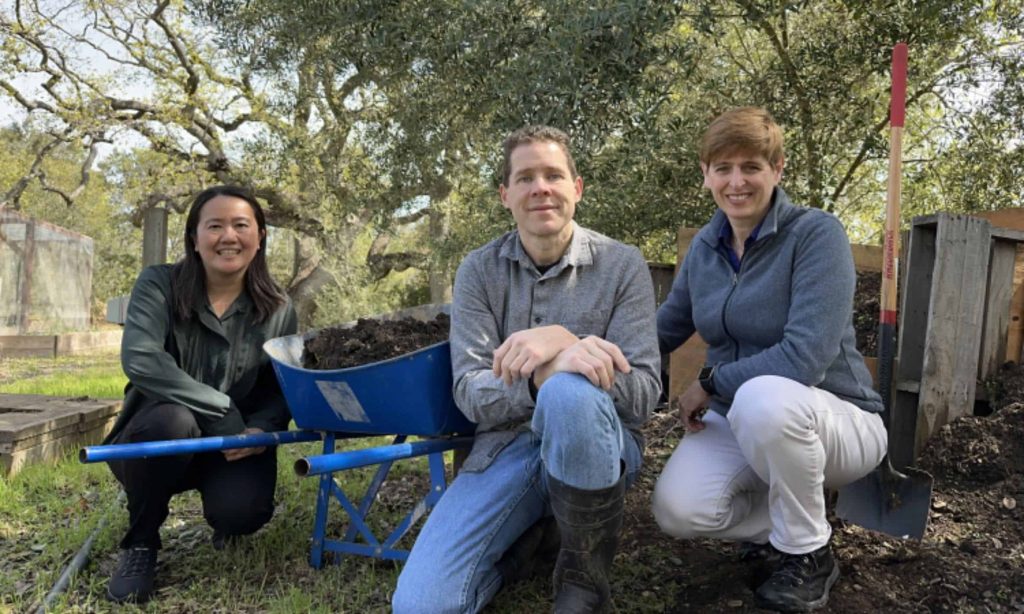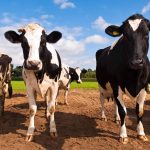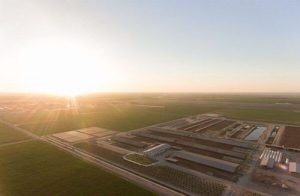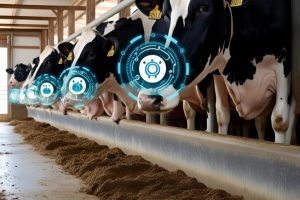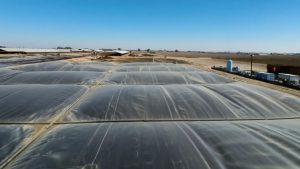
From methane-busting boluses and feed additives to improving slurry storage practices, there’s been no shortage of experimental solutions available to livestock farmers looking to reduce their carbon footprint.
But what if the answer to the industry’s ongoing sustainability efforts could be found at the very bottom of the food chain, in the form of methane-eating microbes? This is what Josh Silverman, PhD, founder and CEO of Windfall Bio, is bidding for anyway.
“We’ve seen a lot of products that have come out trying to replace dairy,” he told us, “but in my mind, the simple answer to dairy’s methane footprint isn’t to destroy farming and come up with a brand new product that doesn’t taste as good and costs twice as much. The answer is, just get rid of the methane.”
Silverman, a scientist by trade who holds a PhD in Biochemistry from Stanford University, started off in therapeutics but later pivoted into the industrial biotech space. In the past 20 years, his businesses – including Aromyx, a data generation and insights firm that offers quantitative measurement of how consumers perceive taste and smell, and Calysta, a cell-ag company specializing in microbial protein fermentation – has raked up $300m in equity funding.
Windfall Bio itself recently completed a $9m seed round, led by venture capital firm Mayfield as well as Untitled, a venture fund founded by Tetra Laval heir Magnus Rausing. The California-based company is now looking for pilot adopters from amongst dairy farming operations in the US, the UK and Mexico to test out the solution and help Silverman and his team fine-tune their offering.
The microbes & the process
In a nutshell, Windfall Bio’s technology involves releasing methane-eating microbes (MEMs) into an environment with higher methane concentration in the air, such as a dairy barn or a manure storage container. The microbes are grown in the company’s fermentation vats, dried, packed and delivered to the farmer in a form similar to a packet of dried yeast. Once ‘awakened’ and released in a favorable environment such as a compost pile, the microbes consume the methane and release carbon dioxide and nitrogen, creating nitrogen-enriched organic fertilizer at no extra cost.
The technology is scalable should work just as well for a single family farm as well as a 10,000-head dairy operation, we were told. Windfall Bio says it has identified ‘the best and most efficient’ species of MEMs during R&D.
“These organisms live in our soils and eat methane as food, because methane has energy,” Silverman explained, adding that the MEMs are ‘the real bottom of every food chain’. “Their natural role in the soil is to take that energy and turn it into nutrients that keep crops growing. So that natural, biological process is what we are harnessing in order to let farmers capture methane as a resource instead of a waste product.”
Explaining how the technology works in practice on a dairy farm, he added: “We want to take these organisms out of the soil and then apply them to areas they wouldn’t normally be exposed to – for example, the exhaust from a dairy barn,” said Silverman. “We can put the microbes into a compost pile, and put that pile into the path of the ventilation. Now, you have the organisms in an environment that they are happy in – the compost – but you also have methane coming out of the barn, allowing them to feed on it, grow and multiply in that compost pile, and fix nitrogen and carbon in it.”
“In the end, the farmer has a much more valuable pile of compost than they did before, and need to buy less fertilizer because they don’t have the same nitrogen needs they had before.”
No additional energy
DairyReporter pointed out that a similar idea for producing sustainable fertilizer on-farm is being explored by European firm N2 Applied. In their case, a plasma conversion is performed to slurry inside a proprietary container, the process locking in the methane and ammonia to the liquid waste material and leaving the rest as nitrogen-enriched fertilizer. Silverman said that a key difference is that Windfall Bio’s process doesn’t require electricity or high temperature to convert the methane. “The organisms eat the methane, and that happens at room temperature,” he explained. “The process doesn’t require equipment and, importantly, no extra energy – in fact, the organisms are using energy from the methane to ‘power’ the whole process.”
Asked what methane reduction rates the company has managed to achieve so far, Silverman said: “If you have methane going in, we can get 96+% reduction of methane in that stream.”
But there are no hard and fast rules on how much methane is eliminated per se, as that would depend on the gas’ concentrations in the specific environment. “The biggest challenge is getting the organism to the methane,” Silverman explained. “This is why we like dairy barns, which are enclosed and there’s typically a fan moving the air so you can make sure the methane is directed towards the bacteria. That’s not so much the case if the cows are out in a field.”
He added: “Even if we can’t get a 100% reduction, everything we do capture is still a benefit. It’s profitable for the farmer whatever they can capture – the more they capture, the more fertilizer they make.
“We don’t have to get to a 100% [methane reduction] to have a utility, but there is certainly a path to getting there.”
Cost
Silverman estimated that a farmer could get a 4x return of investment, ‘so for every dollar spent on our product, they would probably end up with $4 of fertilizer value’. “We model our pricing based on the nitrogen value of the fertilizer that we would make in that it should be profitable for the farmers,” he explained.
“The goal is to have something very simple, very easy, with low capital expenditure. We want this to be cheap enough so that any farmer at any scale can apply this and create value on site for that particular farmer.”
The technology is also applicable to other industries, such as pig and poultry farming, and can be used at wastewater treatment plants and landfills.
‘No one has to pay extra’
So how does this tech factor in dairy’s sustainability efforts and bottom line? Silverman says the process can unlock a new product segment that would appeal to eco-conscious consumers, such as flexitarians who have or are planning to convert to dairy-free alternatives due to dairy’s image of a polluting industry.
“If you are trying to remove methane from your operations, you are likely reliant on credits or subsidies, and someone else – usually the consumer – has to pay a premium for the product because it costs money to create this product. In our case, the farmer would make money from fertilizer. This is the valuable product, and it’s at the back end [of the supply chain].”
“The dairy brand can then offer the consumer a methane-reduced dairy product that is cost-neutral with normal dairy products. There’s no sacrifice here – no one has to pay extra for a sustainable product.”
Pilots and scale-up
With seed investment secured, Silverman and his team are investing in establishing pilot schemes at dairy farms across the US, the UK and Mexico, through which the company will fine-tune its offering and gain additional insight into how the bio technology can be utilized. Alongside the bacteria itself, the company is also offering feeding, tracking and monitoring services. “These are special organisms that need special handling alongside of it,” Silverman explained, “so we are identifying and helping the farmers in specific regions get the right organisms in the right environment, tracking and monitoring so that we ensure they are growing well.”
Asked if dairy farmers should get in touch if interested in trying out the technology, Silverman said ‘absolutely’.
“We want multiple farms both in the US and the UK and Mexico, probably, within the next 12 months,” he added. “We want to make sure that it really can work for the farmer on site, understand what their needs are and then turn the crank commercially.”
On when the tech could enter broad commercial deployment, Silverman said this could be next year, providing ‘all goes well’ with the pilot schemes. The microorganisms can be grown at scale through contract manufacturing, we were told, to adapt to market demand. “There’s no technology risk here – it’s a question of business model and engineering,” Silverman said. “The organisms by nature will feed on the methane, there’s no risk of that not happening. It’s more a question of how we plug this into a farm and make sure the farmer can run this in a way that’s efficient and useful.
“Those are technical and business challenges, but not something that’s fundamental question of thermodynamics,” he concluded. “So we expect this to move pretty quickly to commercialization. It’s something we feel is ready to go on farms very, very rapidly.”
